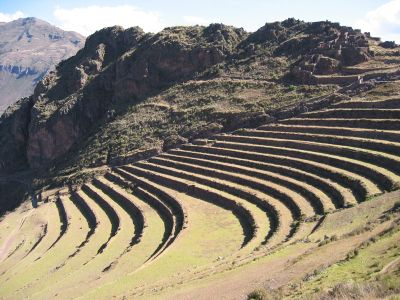New internet-based tool improves agricultural terrace design
 Washington, September 23 : A new internet-based tool for designing agricultural terraces promises to reduce the considerable labor involved and to optimize design by allowing rapid development of alternative layouts.
Washington, September 23 : A new internet-based tool for designing agricultural terraces promises to reduce the considerable labor involved and to optimize design by allowing rapid development of alternative layouts.
The tool was developed by Allen L. Thompson, Associate Professor of Biological and Agricultural Engineering at the University of Missouri, and colleagues.
The new tool is intended to facilitate terrace installation on complex fields, to satisfy conservation goals and make better use of federal and state cost-share dollars.
Contractors, landowners, and resource conservation personnel will benefit with the ability to select the most efficient and cost-effective terrace layouts.
Current terrace layout methods are time consuming.
Rarely is it practical to develop more than one design that can be compared side-by-side for cost, conservation effectiveness, and farmability.
Thompson’s program will lessen design time by taking information about boundaries, desired row spacing, equipment requirements, water flow and other considerations and quickly producing several layout options.
Because the system is internet-based, it has the advantage of utilizing uploadable topographic data collected with global positioning systems.
“It also provides a centralized database that is regularly updated, ensuring easy access to the most current data for soils and topography,” said Thompson.
Ongoing revisions to the program will permit the use of light detection and ranging (LIDAR) data, with the eventual goal to include calculation of cut and fill volumes and predicted soil loss.
Thompson’s program builds on other tools developed in recent decades, taking design capabilities to a greater sophistication.
Automated terrace layout has been slow in development because of the complexity of the calculations required and the lack of high-precision digital elevation data.
“However, LIDAR is becoming more readily available, and web resources have greatly improved in the last few years, both of which have helped generate interest and research support in this area,” said Thompson.
Beta testing of the program is currently underway, after which the it will be available to the public. (ANI)